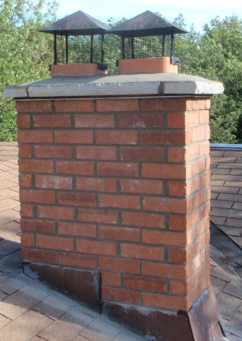 Everyone loves the glow and warmth that is generated by a fire. In ancient days a fire was the mainstay of family and community life. Cooking, light and heat were its main functions. A fire was generally set up in the center of a conical shaped room with an opening at the top for smoke to rise out of. (The early chimney).
Everyone loves the glow and warmth that is generated by a fire. In ancient days a fire was the mainstay of family and community life. Cooking, light and heat were its main functions. A fire was generally set up in the center of a conical shaped room with an opening at the top for smoke to rise out of. (The early chimney).
In modern times it is either a romantic entity that enhances an ambient atmosphere or it can back up your main heat source or even be your main heat source. Whatever your scenario, this page is for you. While the primitive chimney was fine in its day, we have more sophisticated means of exhausting smoke from our homes. This is via the chimney.
A chimney flue that is too narrow or too large for the appliance will NOT draw properly and will make the attached unit perform badly and can result in an accumulation of deposits within the flue channel,
Think of sucking a milk-shake out of a pop straw. With wood, these deposits are known as soot and creosote.
For LP and NG units this is carbon powder. Either way, excessive deposits are a problem waiting to happen.
Your WETT Certified Technician cannot do an Servicing on these units unless they are also Certified for NG/LP servicing by TSSA [The Technical Standards and Safety Authority ]. We can look at and sweep the chimney system ONLY but the NG/LP must be shut off for us to do that. You should have your NG/LP Service Technician look at all intake and out-take vents while they are servicing your units.
Chimneys can be constructed from a number of building materials. These include....